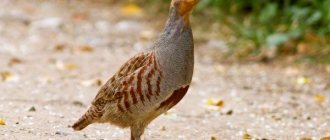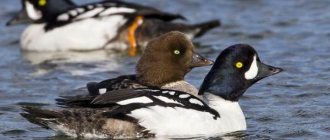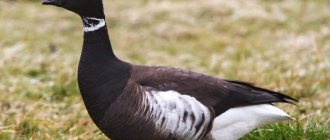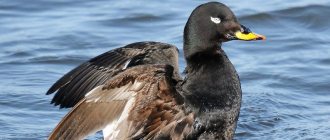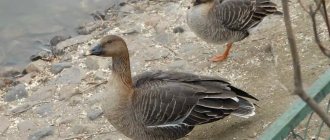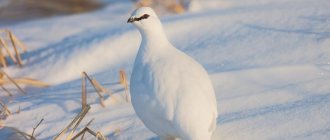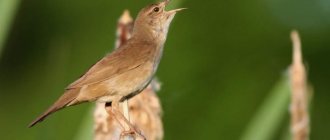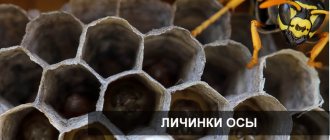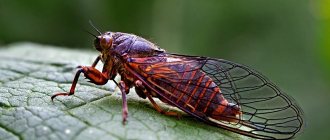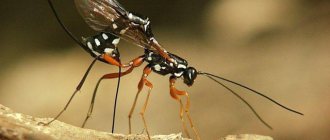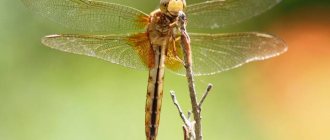In addition to the well-known birds of paradise, there is a very interesting group of beautiful birds - paradise flycatchers. Previously, they were classified as members of the flycatcher family, because. some features (such as large whiskers) and biology are similar to those of common flycatchers. But now they are classified as a separate monarch family, which includes a large group of attractive subtropical and tropical birds. And the paradise flycatcher is one of the cutest in this group.
Description of the bird
The flycatcher family includes two large genera - true and pied flycatchers, which in turn are rich in a variety of species and subspecies of these small songbirds.
Appearance
In size, flycatchers resemble an ordinary sparrow, but the color of the plumage varies greatly among different species. Representatives of true flycatchers are usually modestly colored, in gray, brown, olive tones interspersed with black and white, but among the variegated flycatchers there are individuals with rich yellow, blue, orange and red colors. The body length of the birds reaches 15 cm, the wingspan is 20-25 cm, the weight is from 10 to 17 g.
Features of the beak
— Advertising —
A wide beak with short elastic hairs at the base is characteristic of all types of flycatchers, thanks to which they can capture their main food - insects - in flight.
The appearance of chicks
In June, eggs appear in the nest, of which there are usually no more than six. The shell is colored bluish interspersed with dark shades. The female incubates the eggs herself for two weeks. Egg dimensions 19 x 14 mm. Sensing danger, the birds fly around the nest with restless cries, sometimes they can even imitate an attack on an uninvited guest who is trying to inspect the nest, swooping down on it, curling up right next to its face.
Both parents feed the chicks. The offspring grow very quickly, and by the age of one month they become independent. And during this time the parents manage to make a second clutch.
What does it eat?
The very name of these birds speaks about the nature of their diet and food preferences. Flycatchers are excellent and passionate hunters of insects, including butterflies, flies, and dragonflies. The bird hunts in a very interesting way: it hides in the dense foliage of a tree and suddenly jumps up to grab an insect flying by in its tenacious beak and instantly return to ambush.
If the weather does not allow the flycatcher to fly, then the bird finds beetles, ants or spiders in the foliage of the trees.
Dionea transplant
Having bought a flower in a flower shop, after a while we think about replanting it. Is it worth doing this? Dionea does not need urgent relocation, because the soil does not deteriorate when watered.
- The “relocation” procedure should be done once every couple of years after wintering in the spring.
- Take a pot slightly wider than the previous one by 1-2 cm. Fill the bottom with drainage - under no circumstances use expanded clay. Better take brick chips.
- Then replant the flytrap without damaging the roots - using the transshipment method. It is advisable not to touch the leaves so as not to injure their structure.
- After transplanting, water the flower and place it in partial shade for about a week.
Where does it live?
— Advertising —
Flycatchers like to live in open spaces; they prefer open forests with an abundance of cozy forest glades and clearings. They often become inhabitants of towns and villages and are not afraid of human proximity.
Their habitat is wide and includes all wooded areas of Europe and Asia.
Chicks: plumage
The first plumage of the chicks is brownish-brown on top with light buffy spots on the feathers. The craw, throat and upper part of the breast are pale buff with a scaly brown pattern. Its intensity decreases in the upper part of the abdomen. On its lower part the drawing is completely absent.
The lower tail coverts are white. The first post-nesting (winter) plumage of young birds is very similar to the color of an adult female. However, on the upper and primary coverts the edges are less pronounced. The change of nesting plumage in young birds from early broods begins already in mid-June. This partial molt covers almost all the small feathers, excluding the outer upper coverts and secondaries.
In offspring from later broods, the first moult, as a rule, ends in late August-early September. During wintering, only rare first-year birds have individual red feathers on their throats. Adults molt twice a year: completely during the pre-nuptial period at wintering sites and during the post-nuptial period at nesting sites.
Kinds
Gray flycatcher
The plumage of the bird is gray-brown or gray, according to its name. The belly is light with sparse dark feathers. The legs and beak are dark. The tail and wings are long. The young are distinguished by their brown color. The species lives in Europe and western Asia. Goes to Africa for the winter.
Broad-billed Flycatcher
The species, like the gray flycatcher, belongs to the genus true flycatchers, and is very similar in appearance. The bird's body length is 13-14 cm, weight is about 13 g. Females and males are colored the same, in olive-gray tones, with a whitish belly.
Habitat includes Eastern and Southern Siberia, Japan, and the Himalayas. The broad-billed flycatcher winters in the south of the Asian continent.
Little flycatcher
The species is distributed throughout Eurasia. This bird is small, with a body weight of about 11 g. The back of the male is brown-gray, the chest, head and neck are ash-gray with a red stripe on the throat, which is not found in young birds and females. There are white stripes on the sides of the tail and lower belly.
Pied Flycatcher
Adult males are brightly colored, black and white. The back is black with a gray loin, the head is black with a white spot on the forehead, the belly is white. The wings and tail are brownish-black with white decorations in the form of spots or stripes. Young animals and females have gray-brown plumage instead of black, and the belly is grayish-white. The body length is 16 cm, weight – up to 20 g. The bird lives in the forests of Europe and winters in Africa.
White-throated Flycatcher
The species is widespread in Europe and northern Asia. The bird's body length is 13 cm. The male's head is black with bright white spots on the throat and forehead. The back, top of the wings and tail are also black. All other parts of the body are white. The females are distinguished by brown plumage on the head without white spots, gray color of the wings and back. The birds' legs and beak are black and gray.
Taiga flycatcher or mugimaki flycatcher
An inhabitant of the taiga, which stands out among its relatives with its bright red chest. The back of males is black with a white stripe on the shoulders and behind the eyes. The belly is white, and the chest is rusty-red. The plumage of females and young animals is predominantly gray-brown, the breast is yellowish, lighter than that of males.
Pied Flycatcher
The male pied is slightly different in appearance from the female. The color of its plumage is contrasting, black and white, which makes the bird look like a small magpie - black back, white belly, white spots on the forehead and wings. The plumage of the female is more modest and inconspicuous, consisting of gray-brown shades. The Pied Flycatcher is an omnivorous bird.
Trust in people allows these birds to build their nests in public gardens and parks, where there are a lot of people. Arriving in early spring, the pied bird nests in hollows and crevices of trees, and willingly settles in artificial nests. The clutch usually consists of 5–7 bluish eggs. The incubation period takes approximately two weeks.
Keeping at home
Unfortunately, small and agile flycatchers do not get along very well in cages. But since these birds love to live close to people, they can be attracted to the countryside if you build a titmouse house for the flycatchers. A small structure made of boards measuring 10 by 10 by 20 cm is hung on any tree in the garden, and soon it can be populated by pied flycatchers. The gray flycatcher itself willingly nests on ledges and in the corners of houses.
Nest construction
It is interesting that the flycatcher (female) builds its nest only with natural materials. She carefully weaves it from moss, thin grass stems, wood fibers, and bird down. The outside of the bird sometimes covers it with lichen and thin twigs.
The inside of the tray is lined with moss, hair-like tendrils of climbing plants, and a small amount of horsehair is used. An open nest (not a hollow) is usually shaped like a small bowl. It does not exceed 50 mm in diameter and 45 mm in depth. It is difficult to detect the nest of a small flycatcher, since it is well camouflaged, and the birds are very careful and stay in the upper branches of trees.
Interesting Facts
- Flycatchers deftly and quickly catch their food, insects, right on the fly, and when their beak slams shut, a loud click is heard.
- Flycatchers eat a lot of harmful insects and thereby benefit humans. So, while feeding its offspring, the flycatcher brings approximately one and a half million insects (about 1.5 kg) to the chicks.
- To feed six chicks, the flycatcher flies for food approximately 500 times per day.
- During the nesting period, a male pied flycatcher can create several pairs with different females. But he always takes care of everyone who is in his “harem”.
Lifestyle and habitat
Most often, flycatchers can be found in thickets of bushes, in small forests; they also prefer to populate forest areas, choosing open areas: clearings, clearings. Those who want to watch them in the forest have the opportunity to witness the following picture.
These birds are located on a branch, occupying a vertical position, from this position vigilantly observing whether any insect will fly past. At the same time, the wings of the hunters shake and flutter, and they themselves are ready to fly at any moment, and when they see a suitable victim, they take off to overtake the desired prey in the air.
The main threat to these small creatures is from large feathered predators. These birds often live in close proximity to artificial structures and human habitation.
Therefore, often found in garden plots and small forests near fields, they turn out to be a great success for owners of homestead territories, destroying a huge number of harmful caterpillars, larvae and other small pests, and especially during the period of raising chicks.
Mechanical methods of struggle
Mechanical methods include sticky traps, vacuuming, pressing, and trapping.
By the way, sticky traps are not very effective against flycatchers. They will simply leave a few of their legs on the Velcro and run away, and after a while they will grow new legs.
It's best if you just catch the centipede in a jar and take it outside.
How to get rid of flycatchers in an apartment and a private house?
The most effective way to prevent a centipede infestation is to reduce the humidity in and around your apartment or home. Remove piles of leaves and grass clippings, logs, rocks and stones from your property. Provide adequate ventilation for basements, attics and garages. Seal holes, cracks and crevices that allow centipedes to enter your home. Buy a dehumidifier or start ventilating the room more often.
The second reason why centipedes have settled in your apartment and do not want to leave it voluntarily is the abundance of other insects that they feed on. Take a comprehensive approach to pest control: lay out traps, use modern gels and aerosols.
Reducing cover for millipedes is an important step in controlling them. Seal cracks and crevices in concrete slabs and block walls using appropriate fillers (cement, plaster, foam, etc.). Seal sump pump covers with mesh and sealant. Install window screens in your basement drain to prevent millipedes from entering dry sumps.
